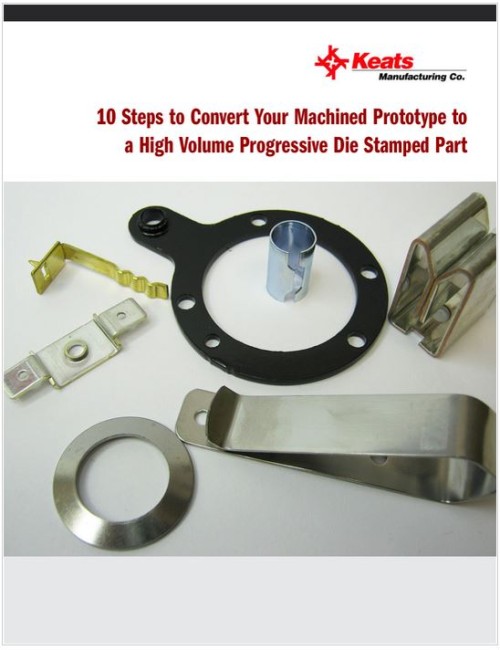10 Steps to Convert Machined Prototypes to Progressive Die Stamped Parts
Once you have a prototype made, what’s your next step? Even if the prototype was made using traditional machining capabilities, you have other fabricating options that may offer you more in terms of cost and time savings.
For your next project, consider converting traditionally machined prototypes into progressive die stamped parts. Utilizing progressive die stamping for full production runs of components can be a major source of cost savings. Changing fabrication methods is a source of maximizing efficiency and minimizing costs. Reducing a project’s bottom line is something everyone should think about.
It isn’t a difficult task to go about switching manufacturing processes and we make it even easier. With our in-depth knowledge and over 50 years of experience in the industry, Keats is your partner in realizing the full benefits of progressive die stamping.
 Various Fabrication Processes
Various Fabrication Processes
Even if a prototype was fabricated through traditional machining operations doesn’t mean that machined parts can’t be produced using a different fabrication process. Utilizing innovative solutions, such as progressive die stamping, that are more cost effective over traditional machining operations should be considered before beginning full production of machined prototypes.
Utilizing a comprehensive and highly evolved 10-step plan, we examine every aspect of the process. From prototype analysis through to long-term, high volume maintenance considerations, Keats assists in every aspect of part migration.
Keats’ 10 Steps to Progressive Die Stamping
To help you appreciate our attention to detail, we have published an eGuide that lays out the 10-step process we follow. By downloading 10 Steps to Convert Your Machined Prototype to a High Volume Progressive Die Stamped Part you will see what happens in each part of the process.
These 10 steps include analysis of the prototype, designing the part for manufacturability tool design, and production scheduling. The goal throughout this process is to provide maximum value for your high volume parts. Running through these steps gives you an idea of how the progressive die stamping process, and Keats in particular, can maximize efficiency while minimizing costs.

Once you have looked through 10 Steps to Convert Your Machined Prototype to a High Volume Progressive Die Stamped Part, feel free to contact us to learn more about how Keats can help you improve your bottom line.

